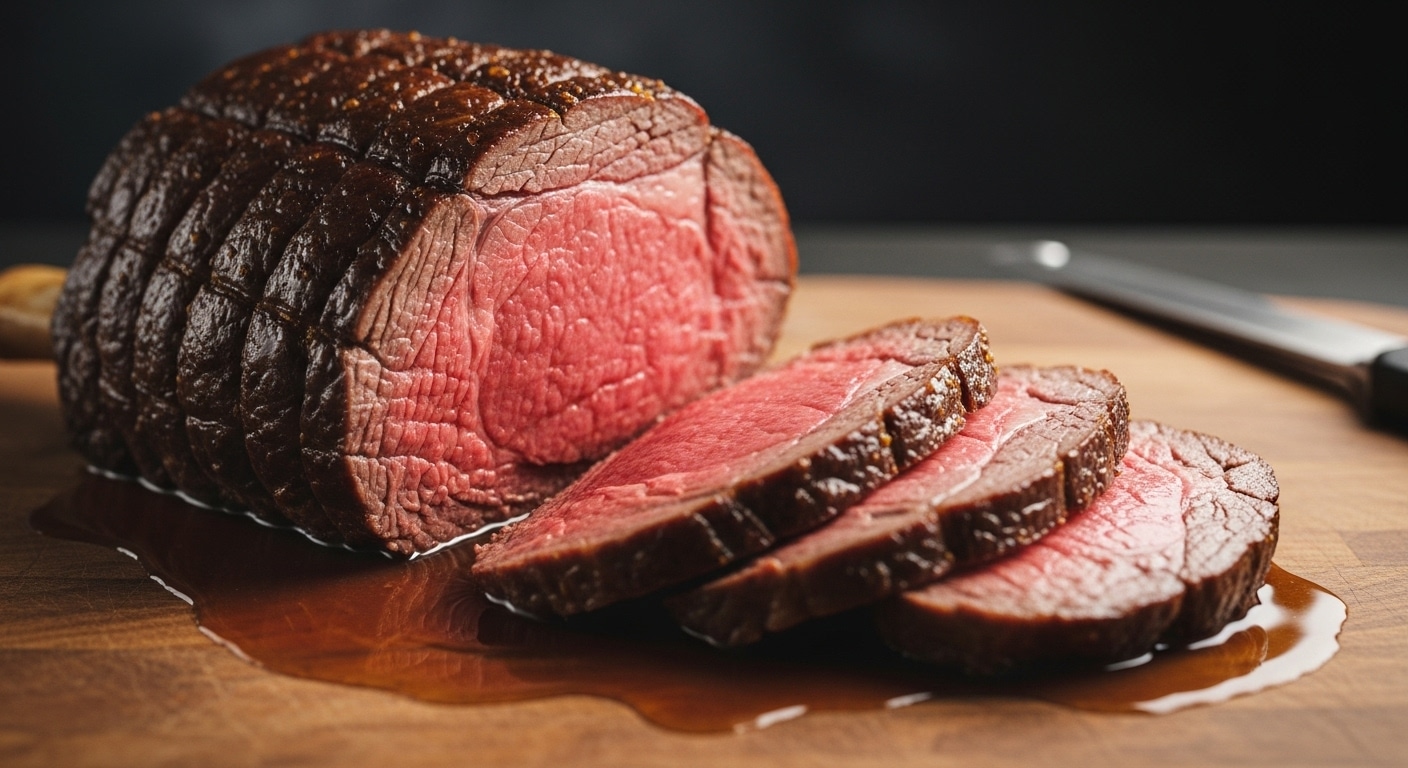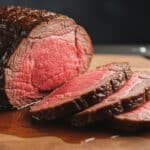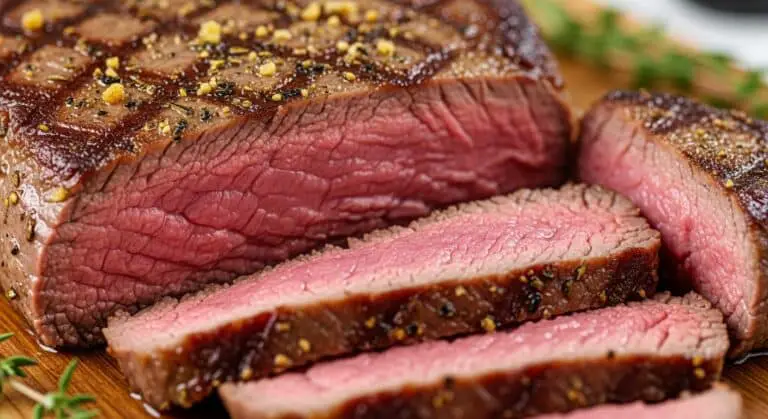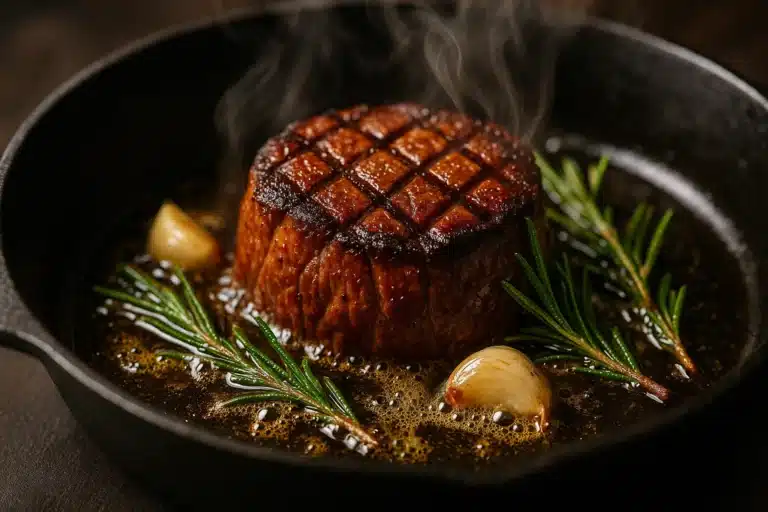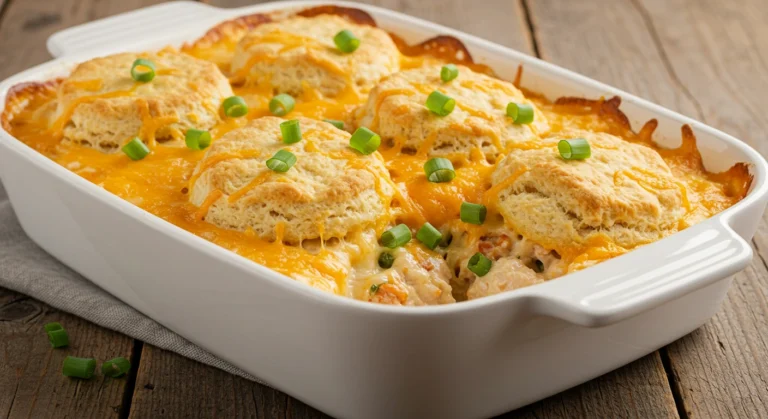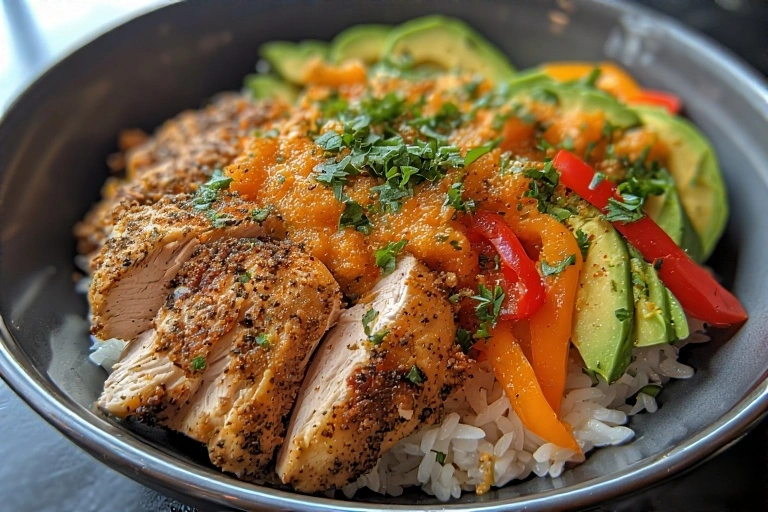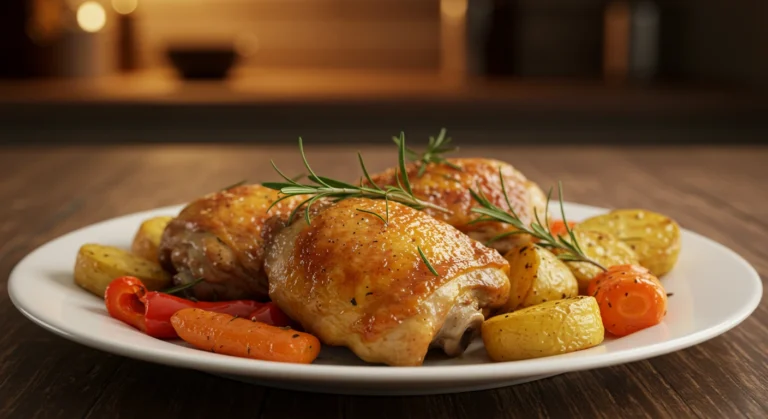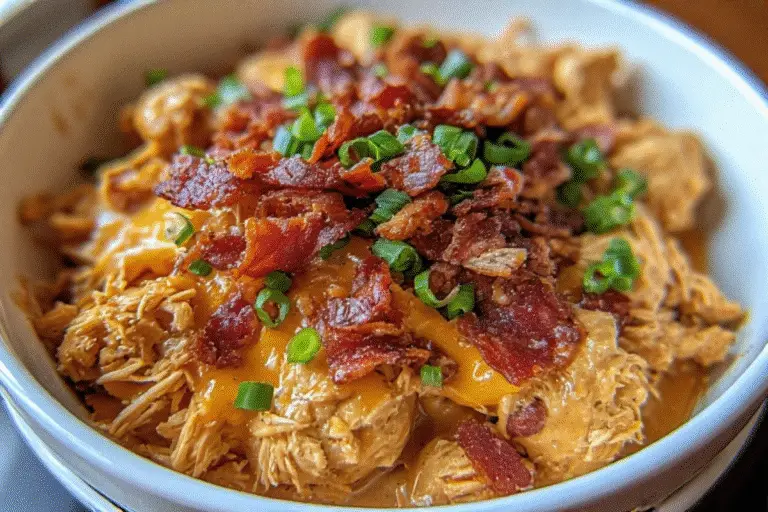Sous Vide Prime Rib That Melts in Your Mouth – Easy & Foolproof
Cooking the perfect sous vide prime rib isn’t just a modern trend—it’s a game-changer for anyone craving edge-to-edge doneness, mouthwatering juiciness, and steakhouse-quality flavor at home. Whether you’re preparing a special holiday dinner or simply treating yourself to a gourmet meal, this technique offers unmatched consistency and ease. As a result, sous vide cooking brings out the best in a prime rib roast—locking in flavor while ensuring a foolproof finish every single time.
In this comprehensive guide, you’ll learn exactly how to make sous vide prime rib from start to finish. Not only will you discover expert tips, temperature and timing charts, and searing secrets, but you’ll also explore flavorful rubs, rich au jus pairings, and more. Moreover, we’ll answer your most pressing questions like: “Is sous vide good for beef ribs?” and “What’s the ideal temperature?”
To take things further, check out our easy tutorial on Sous Vide Beef Tenderloin if you’re looking to level up your beef game even more.
Now, let’s dive into the ultimate sous vide prime rib recipe, starting with the fundamentals of this precision method and why it’s hands-down the best way to prepare a roast.
Why Sous Vide Prime Rib Is a Game-Changer
What Makes Sous Vide So Effective for Prime Rib?
Sous vide is all about precision and consistency, and that’s exactly why it works so well for prime rib. Unlike traditional roasting methods, which rely on fluctuating oven temperatures and can result in dry edges or undercooked centers, sous vide delivers even doneness from edge to center. Consequently, there’s no need to worry about overcooking or uneven results.
More importantly, this method locks in moisture. Prime rib cooked sous vide holds onto its natural juices, creating an incredibly tender and flavorful result. Especially in fattier cuts, the long, low cooking time gently renders the fat, producing a buttery texture that’s hard to beat.
PrintSous Vide Prime Rib That Melts in Your Mouth – Easy & Foolproof
This sous vide prime rib delivers perfect edge-to-edge doneness, unbeatable tenderness, and a crispy seared crust—ideal for holidays or special dinners.
- Prep Time: 15 minutes
- Cook Time: 8 hours
- Total Time: 8 hours 15 minutes
- Yield: 6–8 servings 1x
- Category: Dinner
- Cuisine: American
Ingredients
5–6 Lbs Prime Rib Roast (Boneless or Bone-in)
Kosher Salt
1–2 tbsp Olive Oil
Prime Rib Rub:
1.5 tbsp Dried Thyme
1.5 tbsp Dried Rosemary
1.5 tbsp Onion Powder
1.5 tbsp Garlic Powder
1.5 tbsp Black Pepper
Instructions
Dry brine the roast with kosher salt and refrigerate for 1–12 hours.
Vacuum seal the roast and cook sous vide at 132°F for 8–10 hours.
Make au jus using the reserved cooking liquid.
Pat dry, rub with oil and spice mix, and sear all sides for 1 minute.
Let rest 15 minutes. Slice and serve with warm au jus.
Notes
Use bone-in or boneless roast (double bag if using bone-in).
Add 2 hours cook time if starting from frozen.
For red wine au jus, simmer with wine and shallots.
Nutrition
- Serving Size: 6-8 servings
- Calories: 876kcal
- Sugar: 1g
- Sodium: 129mg
- Fat: 77g
- Saturated Fat: 32g
- Carbohydrates: 4g
- Fiber: 1g
- Protein: 39g
- Cholesterol: 171mg
Keywords: Boneless prime rib, mayonnaise, white vinegar, Prime rib roast, olive oil, garlic powder, onion powder, Beef ribeye roast, green peppercorns, egg whites
Comparing Sous Vide vs. Oven Roasting
To better understand the advantages of sous vide, here’s a quick comparison between it and traditional oven roasting:
| Feature | Sous Vide | Oven Roasting |
|---|---|---|
| Doneness Control | Precise (±0.1°F) | Approximate (±10°F) |
| Moisture Retention | Excellent | Moderate |
| Flavor Concentration | High (sealed bag cooking) | Good |
| Risk of Overcooking | Very Low | High if not monitored |
| Prep Time Flexibility | High (set and forget) | Moderate |
Clearly, sous vide offers superior control and flexibility. Because of its reliability, it’s become a go-to method for chefs and home cooks alike.
Why It’s Perfect for Prime Rib Cuts
Prime rib is a luxurious, high-quality cut known for its marbling and deep beefy flavor. Therefore, it deserves a cooking method that enhances—not diminishes—its natural qualities. Sous vide provides:
- Even cooking throughout the roast
- Easy control over internal temperature
- Unmatched tenderness, especially after long cooking times
- Low-maintenance preparation with hands-off simplicity
Additionally, sous vide is perfect when you’re hosting or juggling side dishes. While your prime rib bathes gently in a warm water bath, you’re free to focus on other elements of the meal—or even relax. In the end, the results will speak for themselves.
Prepping Your Prime Rib for Sous Vide Like a Pro
Choosing the Right Cut: Bone-In vs. Boneless Prime Rib
When selecting your prime rib, you’ll usually have two choices: bone-in or boneless. Both cuts work wonderfully with sous vide, but each offers its own advantages. For example, boneless prime rib is much easier to vacuum seal and sear evenly. It fits neatly into bags and requires less handling overall.
On the other hand, bone-in prime rib offers a bit more flavor and natural insulation during cooking. However, if you choose bone-in, be sure to double bag it. That way, you’ll prevent the bones from puncturing your vacuum seal.
No matter which you choose, select a roast that is well-marbled with noticeable streaks of fat. This is because intramuscular fat melts slowly in the sous vide bath, which results in ultimate tenderness and flavor.
Seasoning Your Prime Rib Roast (Dry Brine Method)
One key step that shouldn’t be skipped is dry brining. This simple process involves seasoning the roast with kosher salt and letting it rest uncovered in the refrigerator. As a result, the salt has time to penetrate the meat and enhance its natural juices.
Here’s how to dry brine properly:
- Liberally coat your roast with kosher salt on all sides.
- Place it uncovered in the fridge for at least 1 hour, and up to 12 hours.
- After resting, the surface will appear dry—that’s exactly what you want before vacuum sealing.
Additionally, dry brining creates a subtle crust and improves the texture once the roast is seared. Because of this, your final result will be more flavorful and juicy.
Vacuum Sealing and Bagging Tips
Proper bagging is critical for safe and even sous vide cooking. To start, choose a heavy-duty vacuum seal bag. If you’re using a bone-in roast, double bag it to prevent accidental punctures. Then, if desired, you can tuck in a few fresh herbs like rosemary or garlic cloves for added flavor infusion during the cook.
To remove the air:
- If using a vacuum sealer, seal the bag fully before placing it in the bath.
- If using the water displacement method, lower the bag slowly into a pot of water, letting the pressure push out the air.
- Once the air is gone, seal the bag tightly just above the water line.
By removing air properly, you prevent the bag from floating, which could lead to uneven cooking or food safety concerns.
Prime Rib Rub: Flavor That Pops After the Bath
Although your roast will be cooked before the rub is applied, having your seasoning mix ready makes the process smoother. That way, you can move straight to searing without delay.
Mix together the following rub:
- 1.5 tbsp dried thyme
- 1.5 tbsp dried rosemary
- 1.5 tbsp onion powder
- 1.5 tbsp garlic powder
- 1.5 tbsp black pepper
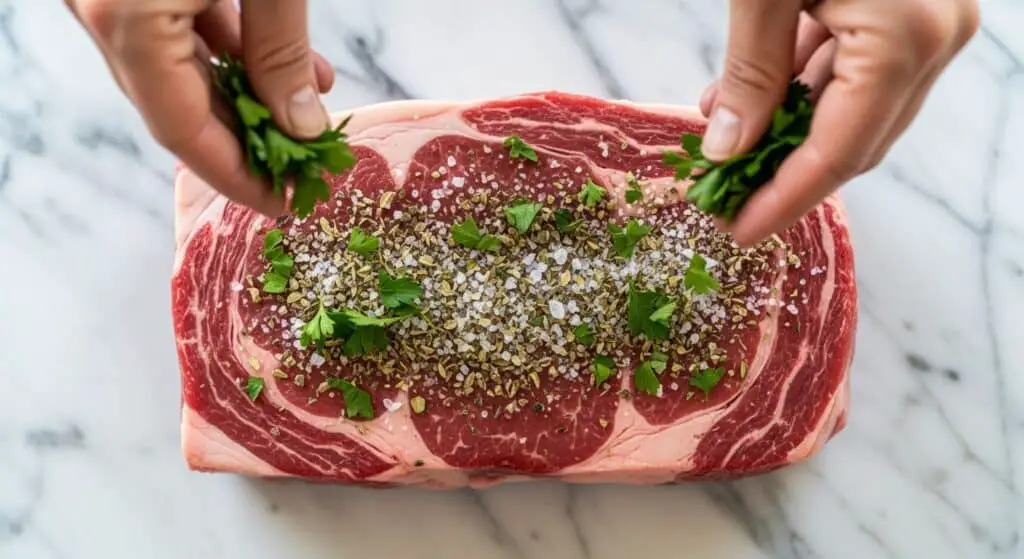
Note: Skip the salt here—because you already dry-brined, adding more could make it too salty.
Looking for more bold beef flavors? Don’t miss our Garlic Parmesan Beef Chops with Cream Sauce for another herb-forward dinner idea.
Sous Vide Cooking Times & Temperatures for Prime Rib
Ideal Sous Vide Temperature for Prime Rib Doneness
One of the biggest advantages of sous vide cooking is temperature precision. Instead of relying on guesswork, you can dial in the exact level of doneness you want. Unlike traditional ovens, which often overcook the outer layers before the center reaches temperature, sous vide gives you perfect results from edge to edge.
Below is a quick guide to help you choose the right temperature:
| Doneness | Temperature (°F) | Texture Profile |
|---|---|---|
| Rare | 126°F (52°C) | Very soft, red center |
| Medium-Rare | 132°F (56°C) | Juicy, rosy pink—the most popular |
| Medium | 138°F (59°C) | Less pink, still tender and moist |
| Medium-Well | 144°F (62°C) | Slightly firm, mostly gray inside |
Therefore, if you’re aiming for a restaurant-style prime rib, go with 132°F for medium-rare. It’s the sweet spot for a rosy-pink, tender texture that’s hard to beat.
Want to experiment with other premium cuts? Don’t miss our Sous Vide Beef Tenderloin for another elegant beef experience.
How Long to Sous Vide Prime Rib (Fresh vs. Frozen)
Time matters too. While sous vide gives you flexibility, the amount of time your roast spends in the water bath still affects texture and tenderness. Use the following chart as a guide:
| Roast Type | Cook Time Range |
|---|---|
| Fresh Roast | 8 to 10 hours |
| Frozen Roast | 10 to 12 hours |
Additionally, sous vide allows for a time window rather than a strict deadline. So, if you’re preparing for a dinner party and need wiggle room, you’re in luck—prime rib can sit in the water bath for up to 12 hours without losing its quality.
Should You Cook by Time or Temperature?
In reality, you’ll need to control both. Always start by setting your circulator to your desired temperature, then adjust the cook time based on the size and thickness of the roast. For example, a 5–6 lb roast fits nicely into the 8–12 hour window.
Furthermore, sous vide works differently than roasting. It slowly brings the internal temp to your target and holds it there. As a result, you get a uniformly cooked roast every time—never overdone, never undercooked.
Can You Overcook with Sous Vide?
Because sous vide maintains a consistent temperature, the meat can’t overcook in the usual sense—it simply stays at your chosen doneness. However, leaving it in for too long (over 24 hours) can affect texture. The meat may become overly soft or mushy if it sits too long in the bath.
To avoid this, stick to the 8–12 hour window for prime rib, and you’ll enjoy perfect results.
Want more water-bath inspiration? Explore our Pan-Seared Steak with Butter Sauce to see how sous vide pairs beautifully with high-heat finishing techniques.
The Perfect Sear – Locking in Flavor After Sous Vide
Why Searing Matters After Sous Vide
Even though your sous vide prime rib is already fully cooked and unbelievably tender, you still need to finish it with a sear. This step isn’t optional—it’s essential. That’s because it adds a flavorful, golden-brown crust and improves texture dramatically.
In fact, this final step creates what’s called the Maillard reaction, which produces that signature steakhouse flavor and color. Without it, your roast may taste great but won’t have that crisp, caramelized edge that everyone craves.
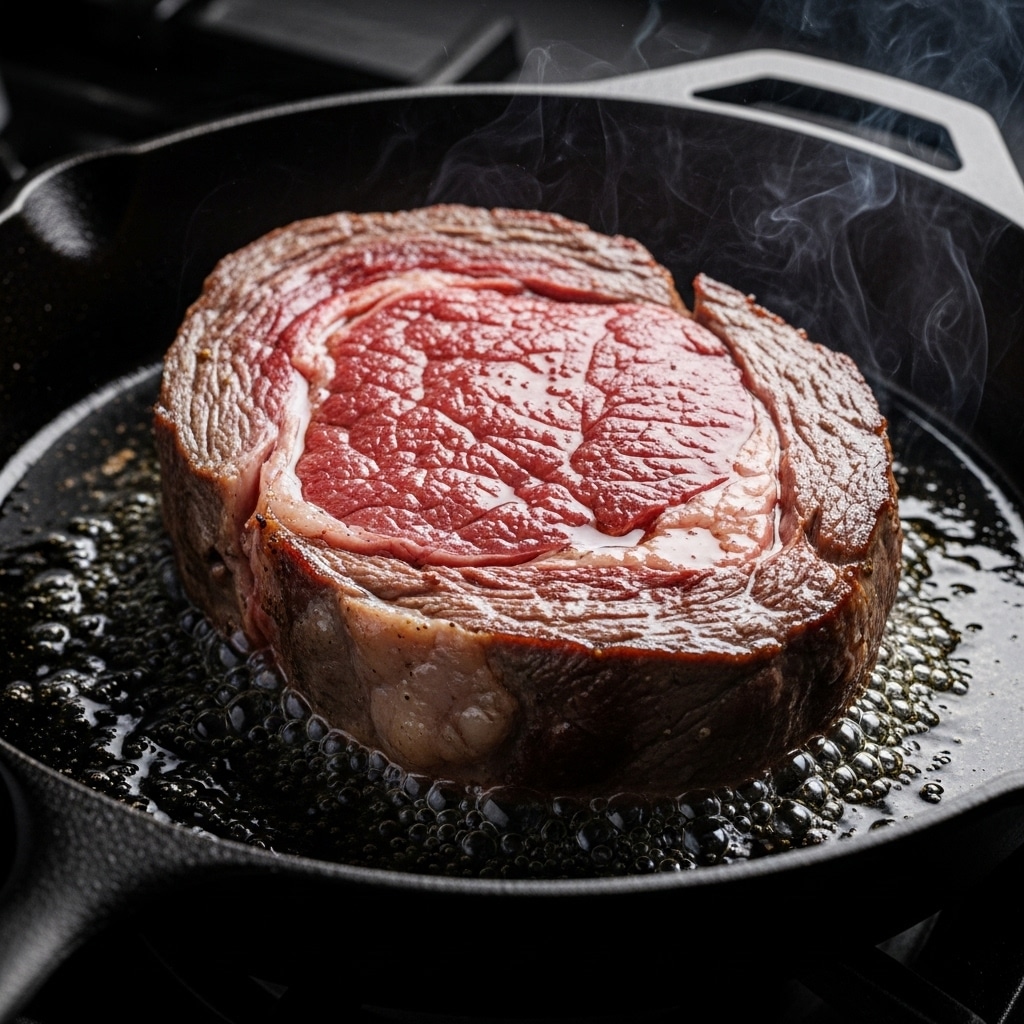
How to Prep Your Roast for Searing
Before you sear, your roast needs a bit of attention to ensure a perfect finish:
- First, carefully remove the roast from the sous vide bag.
- Then, pour out and reserve the bag liquid—you can use it in your au jus later.
- Next, use paper towels to pat the roast completely dry. This step is crucial. Otherwise, you’ll end up steaming the meat instead of browning it.
- Lightly coat the roast with 1–2 tablespoons of olive oil to help the rub adhere.
- Finally, apply your Prime Rib Rub generously. Here’s the mix:
- 1.5 tbsp dried thyme
- 1.5 tbsp dried rosemary
- 1.5 tbsp onion powder
- 1.5 tbsp garlic powder
- 1.5 tbsp black pepper
Note: Don’t add salt again. You already dry-brined it before cooking, and adding more could make it too salty.
The Best Pan and Technique for a Stellar Sear
To achieve a crust that looks and tastes amazing, you’ll want to use a cast iron skillet. This type of pan retains heat well, giving your roast the sear it deserves.
Here’s how to do it right:
- First, preheat your skillet over medium-high heat until it’s extremely hot—slightly smoking is good.
- Add the oiled and seasoned roast into the pan.
- Sear each side for 1 full minute. Don’t forget the ends—those need love too.
Because the meat is already cooked inside, the goal here is simply to brown the outside quickly without raising the internal temperature too much.
For more searing tips, check out our Sous Vide Beef Tenderloin—it’s another cut that benefits from this approach.
Resting and Carving Tips
Once you’re done searing, don’t rush to slice it just yet. Let the roast rest for at least 15 minutes. This way, the juices have time to redistribute evenly, keeping every bite moist and flavorful.
When carving:
- Use a sharp slicing knife
- Cut against the grain for tenderness
- Choose between ½” or 1” thick slices based on your preference
If you want even more meal ideas, explore our Garlic Parmesan Beef Chops with Cream Sauce for your next dinner.
Making the Perfect Au Jus for Sous Vide Prime Rib
Why Au Jus Is the Ultimate Accompaniment
A beautifully cooked sous vide prime rib is already bursting with flavor—but pair it with a deep, beefy au jus, and you take it to the next level. What’s more, this savory, thin gravy isn’t just a dipping sauce; it enhances every bite with umami-rich moisture and complexity.
And the best part? You don’t need to reach for store-bought broth. You already have the perfect base waiting for you—right in the sous vide bag.
Use the Sous Vide Bag Liquid for Extra Depth
Here’s where sous vide cooking really shines. As the roast cooks low and slow, it releases natural juices and rendered fat into the sealed bag. Because of this, these juices are packed with flavor and make an incredible base for your au jus.
Here’s how to use it:
- Carefully cut open the sous vide bag and strain the liquid into a small saucepan.
- Skim off excess fat, or leave a little if you prefer a richer mouthfeel.
- Simmer the juices gently with aromatics or wine for added complexity.
Don’t miss our Garlic Parmesan Beef Chops with Cream Sauce if you’re looking to pair beef with a bold sauce option.
Two Simple Au Jus Recipes to Try
1. Classic Au Jus
Ingredients:
- Reserved sous vide bag liquid (or 1 cup beef broth)
- 1 garlic clove, smashed
- 1 tsp Worcestershire sauce
- 1 tsp Dijon mustard (optional)
- Salt and pepper, to taste
Instructions:
- Let the ingredients simmer gently for 5–10 minutes until they reduce slightly.
- Strain and serve warm alongside sliced prime rib.
2. Red Wine Au Jus
Ingredients:
- 1 cup reserved cooking liquid (or beef broth)
- ½ cup dry red wine
- 1 shallot, finely minced
- 1 tbsp butter
- Salt and pepper to taste
Instructions:
- Sauté shallots in butter until soft.
- Add wine and reduce by half.
- Stir in the bag juices and simmer 5–10 minutes more.
- Strain before serving.
Both versions are easy to prepare while your roast is resting after searing.
Can You Freeze Leftover Au Jus?
Absolutely. Let it cool, transfer to an airtight container or ice cube tray, and freeze for up to 3 months. Reheat gently on the stove for future use—perfect over steak, roast beef, or even mashed potatoes.
Want more comfort classics with sauce? Check out our Creamy Skillet Chicken with Mushrooms & Cheese.
How to Serve Sous Vide Prime Rib Like a Chef
Carving the Prime Rib for the Best Presentation
Once your roast has rested and your au jus is warm, it’s time to carve. Here’s how to do it right:
- Use a sharp slicing knife to cut clean, even slices.
- Cut against the grain to enhance tenderness.
- Choose your thickness:
- ½-inch slices for elegant plating
- 1-inch slices for a hearty, steakhouse-style meal
Arrange slices slightly overlapping on a cutting board or platter for a show-stopping visual.
Pro Tip: Serve with a ladle of au jus on the side or drizzled over the top for an extra-rich finish.
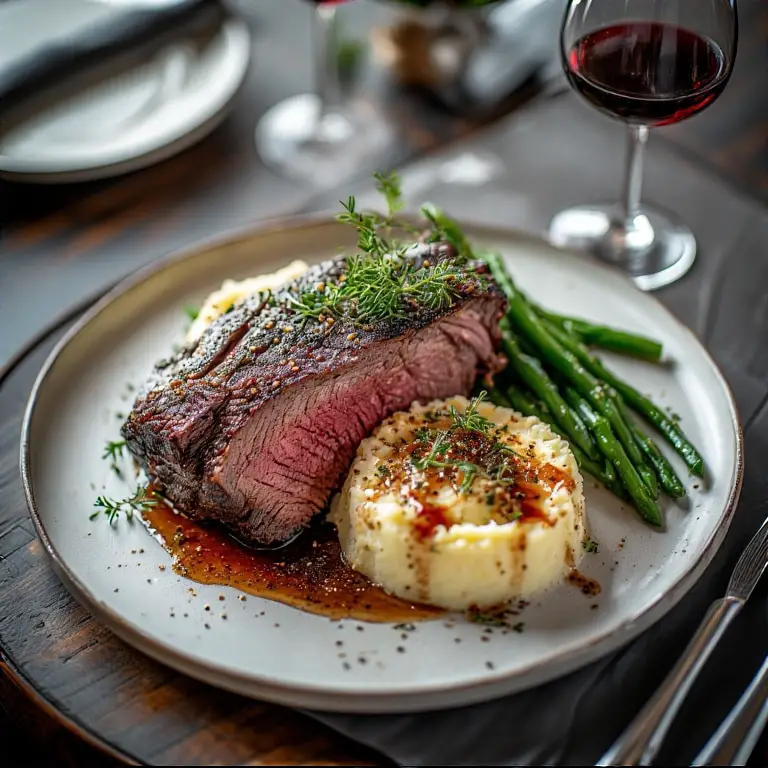
Perfect Side Dishes to Complement Prime Rib
A dish as luxurious as sous vide prime rib deserves sides that enhance, not overpower, its bold flavor. Here are some chef-approved pairings:
| Side Dish | Why It Works |
|---|---|
| Garlic Mashed Potatoes | Creamy, rich, and perfect for soaking up au jus |
| Roasted Brussels Sprouts | Adds a crispy, earthy balance |
| Horseradish Cream Sauce | Offers a bold, peppery contrast |
| Yorkshire Pudding | Traditional, fluffy, and savory |
| Green Beans Almondine | Light, fresh, and texturally balanced |
| Creamy Polenta | Silky smooth and perfect with tender beef |
Looking for more creamy inspiration? Discover our Creamy Skillet Chicken with Mushrooms & Cheese—a perfect side dish alternative or weekday follow-up meal.
Wine and Beverage Pairings
Pair your prime rib with beverages that elevate the richness of the roast:
- Red Wine: Cabernet Sauvignon, Syrah, or Merlot complement the beefy flavors.
- Cocktails: Try a classic Old Fashioned or a rich Manhattan for bold pairing.
- Non-Alcoholic: Black cherry soda or unsweetened iced tea with lemon for balance.
Plating Tips for Special Occasions
If you’re serving this for holidays or dinner parties:
- Plate on a large wood board or white platter for contrast.
- Garnish with fresh rosemary sprigs or pink peppercorns.
- Serve sauces in ramekins or pour from a small pitcher at the table.
Hosting a holiday feast? Impress your guests with our Sous Vide Beef Tenderloin for an alternative cut done just as elegantly.
Pro Tips, Storage, and Reheating Sous Vide Prime Rib
Expert Tips for Even Better Results
Whether it’s your first time or your tenth, these proven tips will help you master sous vide prime rib every time:
- Start with room temperature meat before vacuum sealing—it helps the internal temperature rise evenly.
- Use a digital thermometer to double-check water bath accuracy (especially if your circulator runs hot or cold).
- Let the roast rest after searing to lock in juices and boost tenderness.
- Reserve all juices—the liquid in your sous vide bag is liquid gold for au jus or storing leftovers.
- Don’t skip the dry brine—salting before sous vide deepens flavor and boosts juiciness.
Looking for more beef-forward inspiration? Check out our Garlic Parmesan Beef Chops with Cream Sauce for a weeknight-friendly spin on indulgent beef.
Storing Leftovers the Smart Way
Got leftovers? Don’t worry—sous vide prime rib stores beautifully when done right:
| Storage Method | Instructions | Duration |
|---|---|---|
| Refrigerator | Wrap slices in foil or airtight container | Up to 4 days |
| Freezer | Vacuum seal or use freezer-safe zip bags | Up to 3 months |
Pro Tip: Store with a little au jus or bag juice to retain moisture and prevent the meat from drying out.
How to Reheat Sous Vide Prime Rib Without Overcooking
Reheating is where most roasts go wrong—but not with sous vide. This method allows you to gently warm the meat while keeping it perfectly medium-rare.
Here’s how to do it:
Sous Vide Reheat Method:
- Set water bath to 125°F.
- Place slices in a vacuum-sealed or zip bag.
- Reheat for 30 to 45 minutes, depending on thickness.
Stovetop Reheat (Quick Option):
- Add a few slices to a skillet with a bit of beef broth or au jus.
- Cover and heat on low for 3–5 minutes until warmed through.
Avoid microwaving if possible—it’ll ruin the texture and suck out moisture fast.
Don’t miss our Pan-Seared Steak with Butter Sauce if you’re craving quick-cook beef that reheats well.
The Science Behind Perfect Sous Vide Prime Rib
What Makes Sous Vide So Reliable?
Sous vide cooking works by maintaining a precise, low temperature over an extended period. Instead of relying on variable oven heat, sous vide immerses the food in a temperature-controlled water bath, which gently and evenly brings your roast to the exact doneness you want. Therefore, no guesswork is required.
This slow and steady approach gives you:
- Even cooking from edge to center
- Enhanced moisture retention
- Consistent results every time
Because the temperature is never higher than your target doneness (like 132°F for medium-rare), you eliminate the risk of overcooking altogether.
Overcooking concerns? Remember: With sous vide, your roast never gets hotter than the water, making it nearly impossible to dry out.
How Proteins and Fat React in a Water Bath
At certain temperatures, muscle proteins contract and moisture begins to escape from the meat. Sous vide slows this process dramatically. Here’s a look at what’s happening under the surface:
| Temperature Range | Effect on Meat |
|---|---|
| 120–129°F | Proteins start to firm up gently |
| 130–139°F | Collagen begins to break down (tenderizing) |
| 140°F+ | Moisture starts escaping rapidly |
By holding the prime rib in the 130–139°F sweet spot, you get optimal tenderness without sacrificing juice.
Bonus Benefit: The slow heat also renders fat more effectively, distributing flavor throughout the meat instead of losing it to a hot oven.
Why Timing Still Matters in Sous Vide
Even though sous vide prevents overcooking, time still plays a role in tenderness. That’s why we recommend:
- 8–10 hours for fresh roasts
- 10–12 hours for frozen ones
This extra time allows connective tissues to soften, producing buttery, fork-tender slices.
Want to learn how slow cooking transforms texture? Check out our Sous Vide Chicken Breast – Perfect Results Made Easy for another look at time vs. temperature dynamics.
Food Safety and Sous Vide
Sous vide is not just precise—it’s also safe. Holding meat at 130°F or higher for long periods pasteurizes it, killing harmful bacteria without drying it out. Just be sure to:
- Use clean, food-safe bags
- Avoid cross-contamination during sealing
- Keep temps above 130°F for at least 2 hours
The result? Restaurant-level cooking that’s both safe and reliable—even for beginners.
FAQs About Sous Vide Prime Rib and Beef Ribs
Absolutely. Sous vide is excellent for beef ribs because it slowly breaks down the tough connective tissues over a long cooking time, resulting in incredibly tender, fall-off-the-bone meat. Moreover, whether you’re making short ribs or back ribs, sous vide delivers precise doneness and deep flavor.
Learn more about beef options with our Sous Vide Beef Tenderloin.
It depends on the cut and texture you’re after:
Short Ribs: 24 to 48 hours at 135°F to 155°F
Back Ribs: 12 to 18 hours at 140°F to 150°F
Lower temps = more steak-like. Higher temps = fall-apart tender.
For beef ribs, aim for:
Texture Style
Temp & Time
Steak-like & juicy
135°F for 36 hours
Fall-apart tender
155°F for 24 hours
For prime rib, stick with 132°F for medium-rare perfection.
What is the ideal temperature for sous vide cooking?
It depends on your protein and goal:
Meat Type
Ideal Range
Prime Rib
130°F – 135°F
Short Ribs
135°F – 155°F
Chicken Breast
140°F – 145°F
Salmon
120°F – 130°F
Consistency is crucial—ensure you’re using a reliable sous vide circulator to keep the temperature steady from start to finish.
Don’t miss our Sous Vide Chicken Breast – Perfect Results Made Easy for ideal temps on poultry.
It’s optional—but searing after sous vide is better. Post-sous vide searing locks in juices and builds a rich crust without risk of drying out the meat. Nevertheless, a quick pre-sear can add extra depth of flavor if you’re building a sauce or stock from the bag juices.
For texture, convenience, and consistency, sous vide is hard to beat. It allows for:
Long, slow breakdown of tough collagen
Zero overcooking
Edge-to-edge perfection
Follow up with a quick sear or grill for caramelization, and your ribs will rival any BBQ joint.
Time and temperature control. Low and slow cooking at a steady temp, combined with sealed moisture, ensures beef ribs stay juicy and tender. Additionally, sous vide excels here by holding those perfect conditions for hours on end.
Looking for something tender and saucy? Try our Creamy Skillet Chicken with Mushrooms & Cheese for a comforting follow-up dish
Conclusion: Make Sous Vide Prime Rib Your Go-To Showstopper
If you’ve ever struggled with uneven roasts, dry slices, or the pressure of perfectly timing a holiday meal—sous vide prime rib is your game-changer. From edge-to-edge medium-rare tenderness to foolproof prep and stress-free cooking, this method brings chef-level quality into any home kitchen.
By following this complete guide, you now know:
- How to choose and prep your roast
- The best rub and temperature for flawless results
- When to sear, how to make an unforgettable au jus, and how to serve it right
- Exactly how to reheat and store leftovers without sacrificing quality
Sous vide isn’t just a cooking technique—it’s a transformation tool for home chefs.
Want to explore more gourmet-style meals made easy? Don’t miss our Buttercup Squash Recipes for creative, seasonal side pairings.

